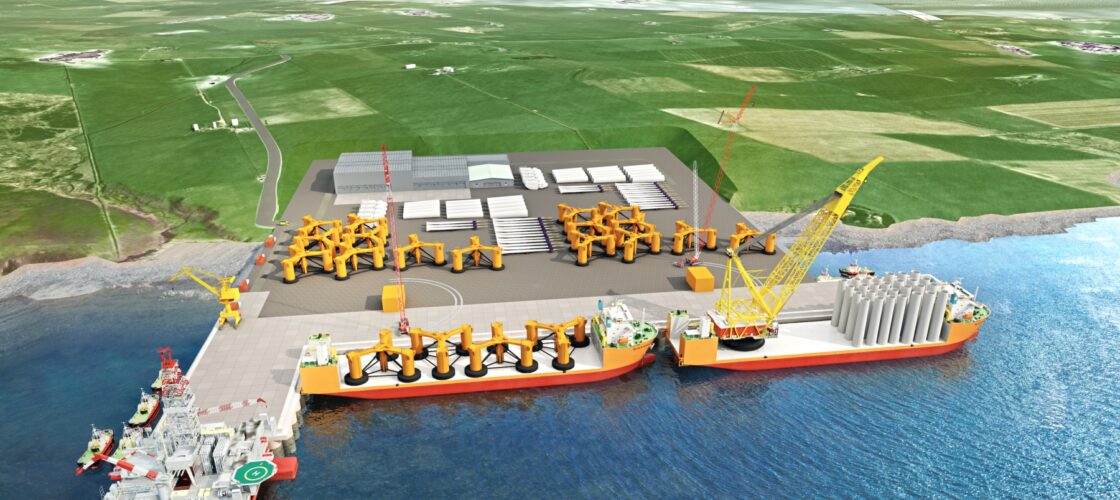
It has been over 18 months since Orkney Harbour Authority (OHA) launched the first phase of its Masterplan for the future.
Focused on supporting the Offshore Wind and renewable energy sectors, Paul Olvhoj, Business Development Manager at OHA, gives an update on progress.
“With the oil throughput continuing to decline, we were presented with a very serious question. What happens if the Flotta oil terminal closes?
“The terminal was first commissioned in 1976 and, at its peak, had capacity to export over 370,000 barrels of oil every day. With the increased development of renewable energy sources, attention started to shift on how Orkney could play its part and what the islands could offer.
“Orkney is naturally gifted in terms of its geography meaning it’s incredibly well positioned to produce wind and tidal energy. Therefore, it was agreed our new Masterplan should be realigned to ensure it focused on what new infrastructure is required and update those which could be repurposed.”
The first phase of the Masterplan was launched in July 2020 and covered five main locations around Orkney, namely 2 locations in Scapa Flow, Hatston Pier, Stromness, and Kirkwall Harbour.
The plan focused on decarbonisation with particular emphasis on how the sector can eventually produce green fossil fuels, such as hydrogen and ammonia, thus supporting the diversification of the Flotta terminal.
Of the five specific locations around Orkney, it was Scapa Flow with its unique sheltered waters that was earmarked as the first main project site to create what will be known as Scapa Deep Water Quay.
In addition, significant work is planned to extend the existing Hatston Pier by 300m as well as in-filling areas between the foreshore and pier to provide a laydown area. This facility will become known as the Orkney Logistics Base and will provide additional space for different partner companies to work collaboratively together to support the wider sector.
“As the industry continues to innovate and looks ahead to the next generation of wind farm innovation, it’s very much our intention that Orkney becomes a centre for excellence to serve the renewables sector.
“The facilities included in our masterplan will provide the baseline infrastructure that will allow the industry to design, test and adapt future large-scale structures that will be needed to push out into ever deeper waters for future offshore windfarms.”
Indeed, as the size and scale of offshore wind equipment grows, the industry will need ever larger facilities and capability as well as move into deeper water. This means more space will be needed on land to accommodate the construction and storage of large components with innovative solutions required to maximise the infrastructure on land and sea.
“The main purpose of the Masterplan is to show how Orkney can support the whole life cycle of windfarm development from assembly, installation, marshalling, operations and maintenance through to decommissioning. It will also provide locations for developing the required sites to aid the production of zero emission green fuels to power deep sea going vessels of the future.
With a deadline to have the first two projects, Scapa Flow and Hatston, in place by 2027, main construction is due to begin in 2024. Site investigations are currently underway at both sites to assess ground conditions with initial work to begin at Hatston in 2022.

